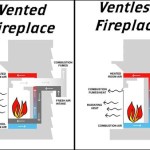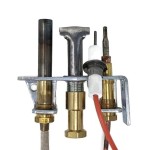Fireplace Without Chimney Or Vent: Exploring Ventless Fireplace Options
The allure of a crackling fire, the cozy ambiance, and the comforting warmth are desires deeply rooted in human history. Traditionally, achieving this meant installing a fireplace with a chimney, a structure designed to safely vent smoke and combustion byproducts. However, modern technological advancements offer alternatives for enjoying a fireplace experience without the need for a chimney or traditional venting system. These ventless fireplaces provide flexibility in placement and installation, opening up fireplace ownership to a wider range of homeowners and renters.
Ventless fireplaces rely on alternative fuel sources and combustion technologies to minimize or eliminate the production of harmful emissions. This makes them suitable for installation in spaces where a traditional chimney is impractical or impossible, such as apartments, condos, or homes without existing chimney infrastructure. However, it is crucial to understand the different types of ventless fireplaces, their operating principles, advantages, disadvantages, and safety considerations before making a purchase.
Types of Ventless Fireplaces
The market offers several types of ventless fireplaces, each employing a different fuel and combustion technology. These include electric fireplaces, gel fireplaces, ethanol fireplaces, and ventless gas fireplaces. Each type has distinct characteristics in terms of heating capacity, aesthetics, installation requirements, and safety features.
Electric fireplaces utilize electricity to generate heat and simulate the appearance of a flame. They typically consist of a heating element, a fan to circulate warm air, and a visual display that mimics the look of burning logs or embers. Electric fireplaces come in various styles, from realistic-looking inserts to modern wall-mounted units. Their key advantage is ease of installation, as they simply require plugging into a standard electrical outlet. They also offer precise temperature control and pose no risk of carbon monoxide emissions.
Gel fireplaces burn a gel fuel composed of isopropyl alcohol and other additives. The gel fuel is typically sold in canisters or individual cups that are placed within the fireplace unit. When ignited, the gel produces a real flame, creating a visual appeal similar to a wood-burning fireplace. Gel fireplaces are relatively inexpensive and portable, making them a popular choice for adding ambiance to a room. However, their heat output is generally lower than other types of fireplaces, and they require careful handling of the flammable gel fuel.
Ethanol fireplaces utilize liquid ethanol as fuel. Ethanol is a renewable fuel source derived from plant materials. These fireplaces feature a burner filled with ethanol, which is then ignited to produce a clean-burning flame. Ethanol fireplaces offer a modern and stylish aesthetic, with various designs available, including freestanding units, wall-mounted units, and table-top models. They produce a moderate amount of heat and do not require any venting. However, ethanol fireplaces are more expensive than gel fireplaces, and the availability and cost of ethanol fuel can vary depending on location.
Ventless gas fireplaces use natural gas or propane as fuel. They are designed with advanced combustion technology to minimize emissions and eliminate the need for a chimney. Ventless gas fireplaces typically feature oxygen depletion sensors (ODS) that shut off the gas supply if the oxygen level in the room drops to an unsafe level. Despite their name, ventless gas fireplaces are not entirely emission-free. They produce small amounts of carbon dioxide and water vapor, and it is essential to ensure adequate ventilation in the room where they are installed. Many jurisdictions have restrictions or bans on ventless gas fireplaces due to safety concerns.
Advantages of Ventless Fireplaces
Ventless fireplaces offer several advantages over traditional wood-burning fireplaces. The most significant advantage is the elimination of the need for a chimney or venting system. This allows for greater flexibility in placement and installation, making fireplaces accessible to homeowners who may not have the structural capacity or desire for a traditional fireplace. They are typically easier and less expensive to install than traditional fireplaces, as they do not require extensive construction work.
Furthermore, ventless fireplaces offer convenience and ease of use. Electric fireplaces can be operated with a remote control and provide instant heat at the touch of a button. Gel and ethanol fireplaces offer a real flame experience without the mess and hassle of wood-burning fireplaces. Ventless gas fireplaces provide consistent heat output and can be controlled with a thermostat.
Another advantage of ventless fireplaces is their efficiency. Electric fireplaces convert virtually all of the electricity they consume into heat, minimizing energy waste. Gel and ethanol fireplaces burn cleanly, producing minimal smoke and ash. Ventless gas fireplaces are designed for efficient combustion, reducing fuel consumption and emissions.
In addition to their functional benefits, ventless fireplaces can enhance the aesthetic appeal of a room. They come in a wide range of styles, from traditional to modern, allowing homeowners to choose a fireplace that complements their décor. The visual appeal of a flickering flame can create a cozy and inviting atmosphere, adding warmth and character to any living space.
Safety Considerations for Ventless Fireplaces
While ventless fireplaces offer convenience and aesthetic appeal, it is essential to prioritize safety when selecting and using them. All types of ventless fireplaces produce heat and, in some cases, flames, and pose a potential risk of burns or fire if not handled properly. It is crucial to follow the manufacturer's instructions carefully and to adhere to all safety guidelines.
Ventless gas fireplaces require particular attention due to their use of natural gas or propane. These fireplaces must be installed by a qualified technician and inspected regularly to ensure safe operation. The oxygen depletion sensor (ODS) should be tested periodically to verify that it is functioning correctly. It is also essential to ensure adequate ventilation in the room where a ventless gas fireplace is installed, even though it is designed to be ventless. Carbon monoxide detectors should be installed and maintained to provide early warning of any dangerous buildup of carbon monoxide.
Gel and ethanol fireplaces also require careful handling of the flammable fuel. Gel fuel canisters should be stored in a cool, dry place away from heat and open flames. Ethanol fuel should be handled with care to avoid spills and should be stored in a tightly sealed container. Never refill a gel or ethanol fireplace while it is still hot, and always allow the unit to cool completely before adding more fuel. It is also important to keep flammable materials away from the fireplace while it is in operation.
Electric fireplaces pose the least risk of fire or carbon monoxide poisoning, but they can still present a burn hazard. Keep flammable materials away from the heating element and use caution when touching the unit while it is in operation. It is also important to ensure that the electrical outlet is properly grounded and that the fireplace is not overloaded on the circuit.
Regardless of the type of ventless fireplace, it is crucial to supervise children and pets when the fireplace is in operation. Never leave a lit fireplace unattended, and always turn it off or extinguish the flame before leaving the room or going to bed. With proper installation, operation, and maintenance, ventless fireplaces can provide a safe and enjoyable source of heat and ambiance.

Install A Fireplace Without Chimney Ventless

How To Vent A Gas Fireplace Without Chimney Vertical Care

5 Types Of Fireplaces For Apartments Homes Without Chimneys Modern Blaze

Do Gas Fireplaces Need A Chimney Dreifuss
:max_bytes(150000):strip_icc()/ventless-gas-fireplaces-4160746-hero-f9d4bdcd9bd446eb84406de306f790ba.jpg?strip=all)
How To Pick Out A Ventless Gas Fireplace

No Chimney Problem Blog

What Is A Ventless Gas Fireplace Experts In Gaithersbutg Md

If You Have A Gas Fireplace It May Or Not Chimney Flue

Ventless Gas Fireplace Propane

Considering A Ventless Gas Fireplace Here S What You Need To Know Bob Vila
Related Posts








